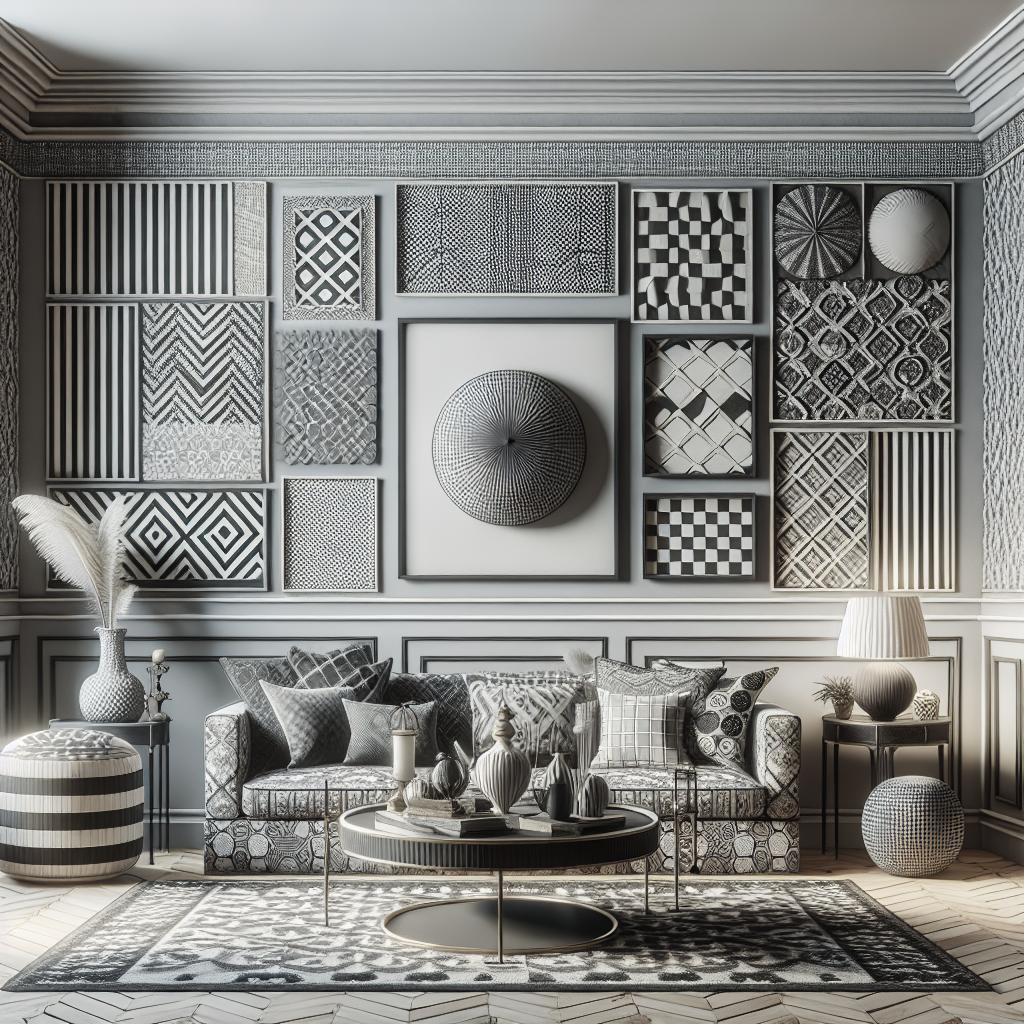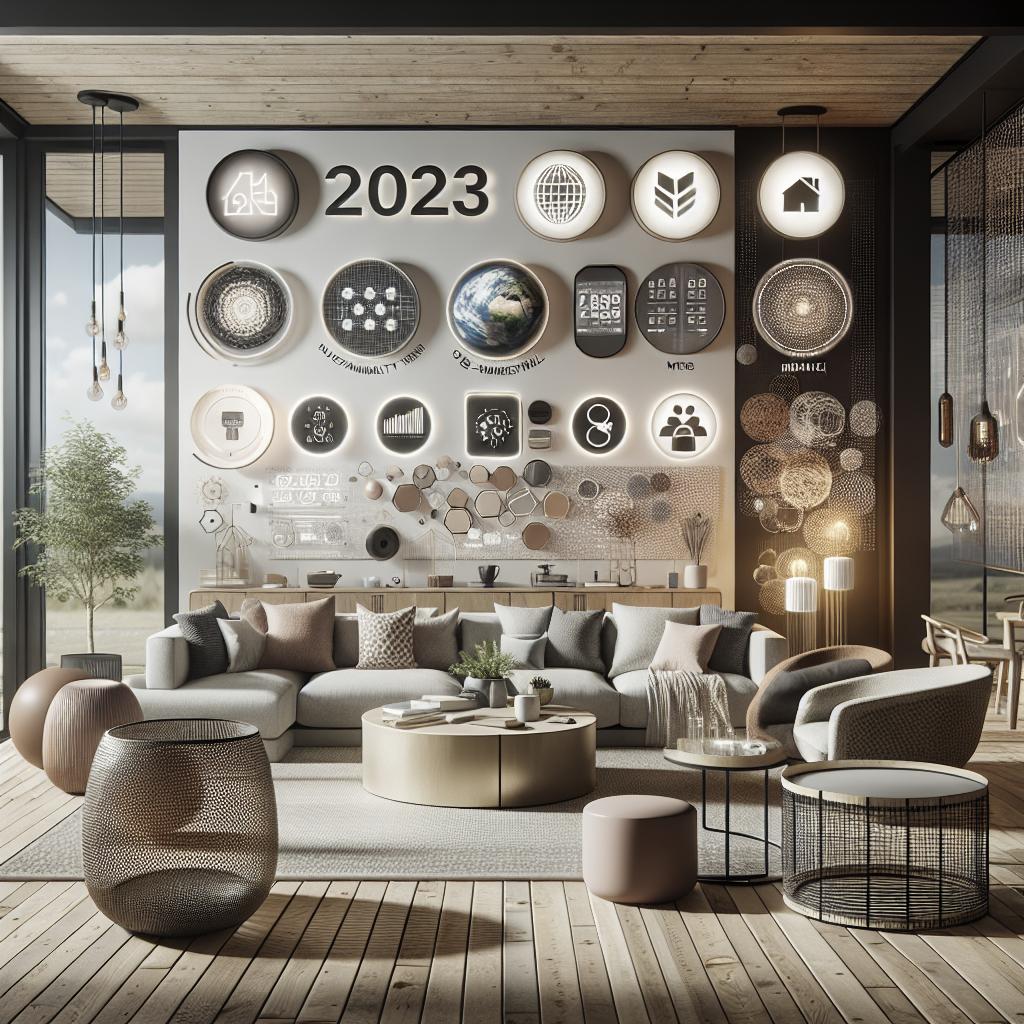Mastering the Art of Mixing Patterns in Home Decor
Mixing patterns in home decor can transform your living space from mundane to magnificent. The art of combining different patterns involves strategy, creativity, and a good eye for detail. This comprehensive guide will delve into the nuances of mixing patterns successfully without overwhelming the space. From understanding scale and texture weight to leveraging your familiarity with fabrics, each section will provide you with actionable insights. Discover why some materials naturally clash and the significance of the number three in decor. Additionally, we’ll stress the importance of experimenting and incorporating staples like leather, wood, and glass for a balanced aesthetic. Embrace these guidelines to bring harmony and style into your home.
Keep Scale Top of Mind
One crucial factor when mixing patterns is scale. Scale refers to the size of the pattern in relation to other patterns within the decor. To achieve a cohesive look, balance different pattern scales. For instance, pairing a large, bold floral wallpaper with smaller, delicate geometric prints on cushions can create visual interest without becoming overpowering. The contrast in sizes helps delineate different areas within the same space.
When playing with scale, consider the overall dimensions of your room. In a spacious living area, bold patterns can be more prominently featured, while in a smaller room, they should be reserved for accent pieces. It is vital to balance large patterns with smaller, more subdued ones to maintain harmony, helping the room feel neither too busy nor sterile.
Pay Attention to Weight When Mixing Textures
Mixing textures adds depth and complexity to a room’s decor. Understanding the visual “weight” of materials is essential. Heavy textures like woven textiles, wool, or velvet can dominate a room if overdone. On the other hand, using only light textures such as cotton or silk might yield a flat appearance. By balancing these elements, you enhance the tactile richness of the space.
Consider how textures interact. Pair rough textures, like a jute rug, with smoother surfaces, such as silk pillows. This juxtaposition creates a more inviting and dynamic environment. Combining light and heavy textures thoughtfully will contribute to a layered look that offers comfort and elegance in equal measure.
Use Your Existing Knowledge of Fabrics to Shape a Room’s Mood
Your familiarity with fabrics can play a pivotal role in setting the atmosphere of a room. For instance, cotton and linen conjure a relaxed, airy mood, ideal for a laid-back living space. In contrast, rich materials like velvet and brocade are synonymous with sophistication and formality, perfect for a more luxurious setting.
Using this fabric knowledge strategically can dictate how a room feels and functions. Pairing various textures can lend warmth or coolness to a space depending on their inherent qualities. Experimenting with different combinations allows you to tailor the ambiance of each room precisely to your preference.
Keep in Mind That Some Materials Don’t Play Nicely Together
Not all materials are meant to mix. Some, due to their texture, color, or pattern, tend to clash instead of complement. For example, using a bold animal print next to intricate oriental patterns can create visual discord. Recognizing these potential clashes allows for more intentional design choices.
Avoiding such mismatches involves understanding the defining characteristics of each material, ensuring compatibility in theme, texture, and tone. Before committing to a particular design direction, consider how well the materials will harmonize visually and functionally within the space.
There Is Power in Threes
The rule of three is a time-tested design principle that suggests using three different patterns in a room creates a balanced look. It offers an effective method for incorporating diverse prints and textures without overwhelming the eye. For instance, a floral curtain, striped rug, and solid sofa can coexist harmoniously when thoughtfully curated.
Use this principle to guide your selection process. Start by choosing your primary pattern from a large area, like a rug or curtains, followed by secondary patterns for smaller accents. Ensuring these elements share at least one color in common is a surefire way to achieve a unified appearance that is aesthetically pleasing.
Do a Test Run First
Before committing to a full redesign, test your ideas with samples and swatches. Temporarily position various patterns and textures in your space to determine how they interact. This approach provides insight into how these elements will work together, allowing adjustments before making permanent changes.
This test run is invaluable in refining your vision. It empowers you to experiment without risk and gain a clearer understanding of the look and feel of your chosen decor strategy. This cautious step often makes the difference between a well-executed design and chaotic disarray.
Don’t Forget to Use Leather, Wood, and Glass
Incorporating foundational materials like leather, wood, and glass can ground your decor, providing a cohesive baseline to build upon. Leather adds richness and texture, complementing softer materials and varied patterns. Similarly, wood offers warmth and formality, enhancing the natural appeal of your space.
Furthermore, glass introduces an element of lightness and transparency, which can soften heavier materials and anchor vibrant patterns. By using these elements judiciously, you add an extra dimension, inviting balance and interest into your design scheme.
Next Steps: Recap with a Table
| Strategy | Key Points |
|---|---|
| Keep Scale Top of Mind | Balance large and small patterns for visual harmony. |
| Pay Attention to Weight When Mixing Textures | Combine heavy and light textures for depth and complexity. |
| Use Your Existing Knowledge of Fabrics to Shape a Room’s Mood | Match fabrics to the desired ambiance of the space. |
| Keep in Mind That Some Materials Don’t Play Nicely Together | Avoid incompatible materials to prevent visual discord. |
| There Is Power in Threes | Use three patterns with common colors for balance. |
| Do a Test Run First | Experiment with samples to ensure harmony. |
| Don’t Forget to Use Leather, Wood, and Glass | Incorporate these materials for grounding and balance. |


